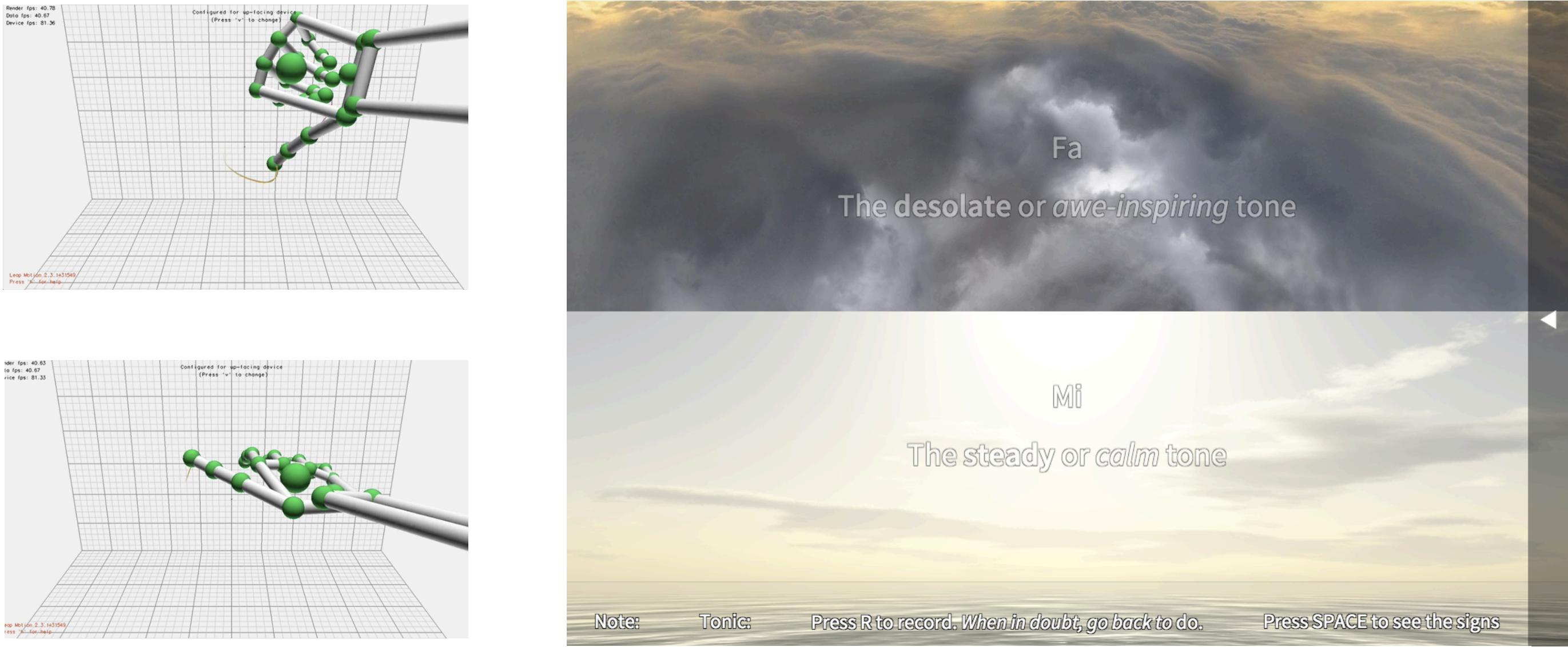
Summary
We present a novel musical system for learning the Curwen-Kodaly hand signs, which stand for solfege syllables and pitches (do, re, mi, etc.). These hand postures comprise a system of musical notation typically used in sight-singing training to familiarize with patterns of musical tones. Therefore, what concerns us is music literacy as opposed to practice with any particular instrument. Our system uses a Leap motion sensor to recognize the hand signs and produce corresponding user-recorded sounds.